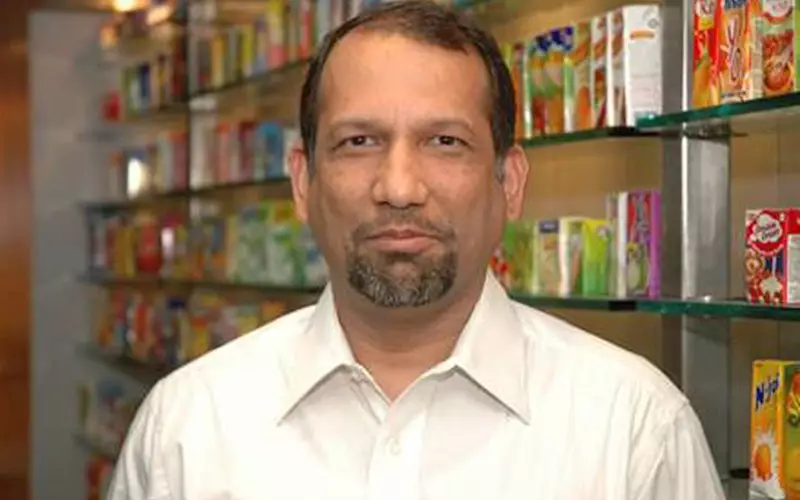Packages to keep food safe, not at the cost of the planet - Tetra Pak
Tetra Pak has come up with a fibre-based barrier to replace the aluminium layer in the standard Tetra Pak carton. Ashutosh Manohar, managing director, Tetra Pak, South Asia Markets, tells Mansi Gupta
11 Jun 2022 | By Mansi Gupta
Mansi Gupta (MG): Can you explain the earlier layers of Tetra Pak cartons?
Ashutosh Manohar (AM): A standard Tetra Pak carton is made of three kinds of materials - Paperboard (70%), Polymer (25%) and Aluminum (5%). All these layers play a critical role by creating a barrier against elements like air, moisture, sunlight etc thereby keeping the food inside the carton safe from spoilage. Our cartons are already over 70% renewable, completely recyclable, and have a much lower carbon footprint across the life cycle, making them more environmentally sound than any other packaging alternative for similar beverages available today.
MG: Explain the new layer that you have introduced this week?
AM: As shared above, today, in our aseptic packaging structure, we have a small amount of aluminium to protect the product inside from light and oxygen. Although thinner than a human hair, the aluminium layer inside our aseptic package (5%) is responsible for about a third of the climate impact of our base materials. Working to replace this aluminium layer with a barrier having a lower climate impact is a development priority. The fibre-based barrier, composed of paper and barriers, represents an alternative to the current aluminium barrier, with early results suggesting substantial CO2 reduction when compared to traditional aseptic cartons, yet securing comparable shelf life and food protection properties.
MG: What are your expectations from this release?
AM: We are on a journey towards building the ultimate sustainable food package, that is fully made of responsibly sourced renewable or recycled materials, is fully recyclable – meaning materials being recycled in practice and at scale globally, and carbon-neutral, and this journey is fairly complex. To bring this future carton package to life, several critical innovations are needed, including accelerating our work around design for recycling. This means removing the aluminium layer, reducing virgin, fossil-based plastic and increasing the share of paper. The alternative barriers we are piloting are part of our step-wise, collaborative approach in the gradual development and validation of completely new solutions.
MG: Is this also better in the EPR chain? How does this benefit in maintaining a Circular Economy?
AM: While striving for disruptive innovations boosting our long-term work on design for recycling, increasing paper content represents a key priority. In this context, the concept carton with a fibre-based barrier has a clear potential to realise a low carbon circular economy for packaging, with the end ambition to deliver substantial CO2 reduction when compared to traditional aseptic cartons, yet offering comparable shelf life and food protection properties. This will also increase the attractiveness of carton packages for paper mills, because of higher paper content, which should further encourage EPR, thanks to the increased value of the material for recyclers.
MG: What are the challenges today that affect carton disposal (especially in India)?
AM: Tetra Pak’s aim is to create packages that keep food safe, but not at the cost of the planet. However, this ambition requires a consolidated effort and significant contribution from industry, policy makers and consumers.
One of the biggest challenges that we face today is lack of segregation of waste at source and littering, which prevent recyclable waste from being recovered successfully. Over the years, we have introduced many initiatives such as Alag Karo Teen Bin (with Saahas), Go Green with Tetra Pak (with RUR Greenlife) and work with over thirty collection & awareness partners in the country to help institutionalize source segregation of waste and sensitise the stakeholders involved. These efforts have helped bring in strong behaviour change, spreading awareness around making better buying decision and helping proper disposal of the waste, but a lot more needs to be done.
MG: Other than consumer behavior, what other stakeholders can help catalyse responsible disposal?
AM: While awareness is important on one hand, it is also important for policy and legislation to evolve accordingly and take a long-term strategic view of environmental sustainability. For example, the issue of littering in India demands strong waste management infrastructure, uniform legislation, clear roles and responsibilities for various stakeholders and strong enforcement. Another big challenge is to create demand for recycled products, so that recycling as a business is a sustainable one. We work with recyclers to identify new and scalable applications, while also working on technologies to make recycling easier.
MG: What responsibilities does a consumer need to take disposing of a new Tetra Pak carton?
AM: Consumers play a crucial role in the recycling value chain. After all, they are the ones who choose and use the food or beverage product and decide whether the used package becomes part of the recycling system. That is why it is critical to increase consumer awareness about the opportunities to recycle carton packages and make it easy for consumers to take the initiative.
There are a few things that a consumer can do. For example, mindful consumption and making choices that are better for the environment. Simply looking at the label for recyclability, composition (renewability, responsible sourcing), choosing a recycled product rather than one made from virgin material whenever possible are some examples. That said, choosing sustainable packaging is not enough. Consumers must also help it get efficiently disposed of by segregating waste, putting recyclable packaging such as paper-based carton packages in the right (dry, recyclables) bin, and so on.














 See All
See All